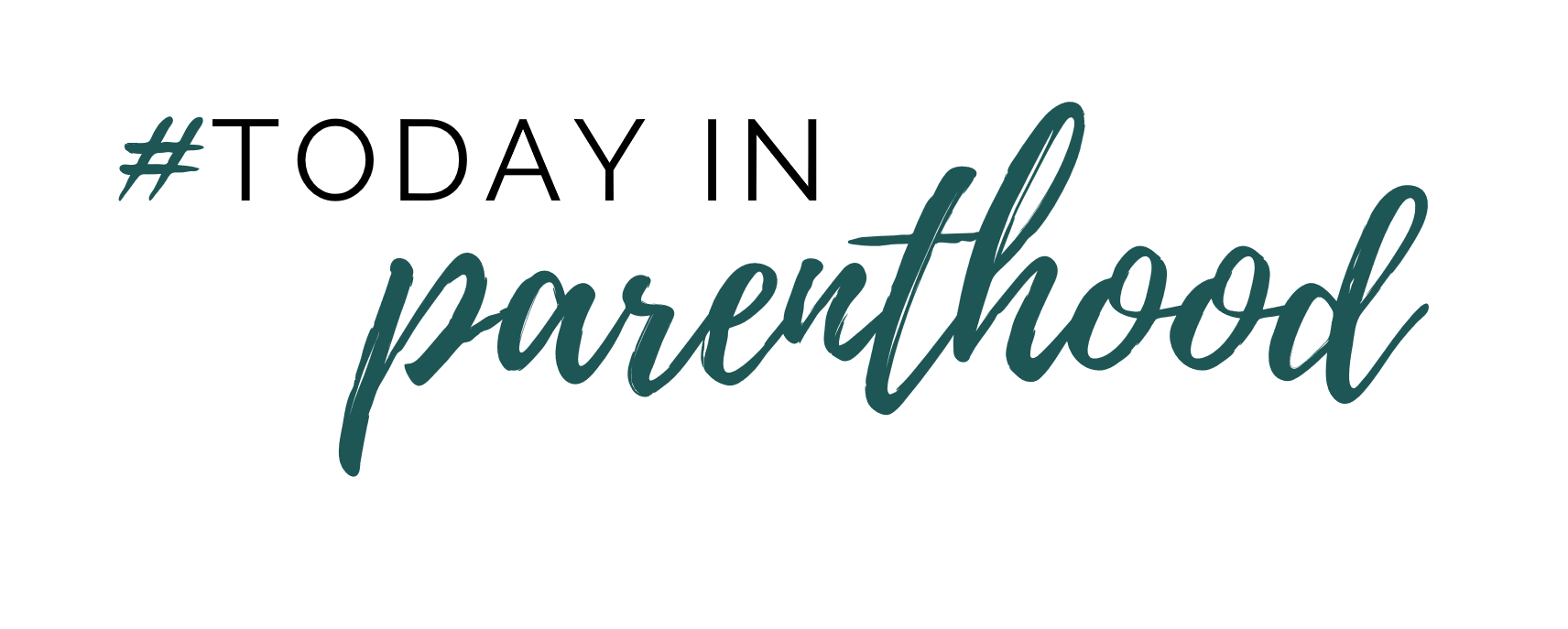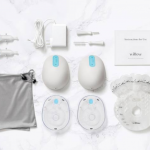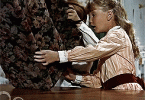Welcome to the judgment-free zone of Today In Parenthood. There are so many opinions (read: judgments and pressures) on the topic of how to feed your baby. If you have strong opinions about which is best, formula versus breastfeeding this article probably won’t resonate with you. That’s okay. We have tons of content that you may find more applicable. With that said, I’ll take a moment to discuss my own journey with how to feed my babies.
You may have read my article about What I Wish I Knew About Pregnancy After VSG (Vertical Sleeve Gastrectomy). If not, here’s a spoiler; I had weight-loss surgery a year before getting pregnant. If you are curious about why I did it and all the ways it impacted my pregnancy check out that article. For this post, the most notable thing is that I wasn’t able to drink enough water. Why would that matter, you ask?
Well, a baby will eventually need 30-40 oz. of breastmilk or formula a day to meet their nutritional needs. That means if you are hoping/planning to breastfeed you’ve got to be able to meet your personal hydration needs (for me this was at least 64 oz. of non-caffeinated, non-sugared, non-carbonated, non-alcoholic liquid a day) PLUS another 30-40 oz. for my son. I am a smart woman, I have a PhD (in political science, but still), and I never did the math.
I always had a very open attitude when it came to breastfeeding because I knew that as a result of the weight-loss surgery or just the wacky way the universe works, that I might not be able to breastfeed. So, I went into it with the idea that I would try to pump. I chose to pump exclusively to make sure I was actually producing enough for Henry (and because on-the-breast breastfeeding from my own breasts creeps me out). However, the reality was that there was no way I was ever going to be able to stay hydrated enough to completely meet my son’s nutritional needs even if my body was able to get the plumbing to work.
I came to this realization about two weeks after Henry was born. It was a strange feeling to realize that I was trying so hard to keep an open mind on the topic of feeding that I never stepped back to realize breastfeeding wasn’t going to be a viable path for me. I was disappointed in myself for not realizing this simple math equation earlier. Oddly enough, going into it knowing that I wasn’t going to breastfeed wouldn’t have changed our journey. I still would have pumped for the first two weeks and then switched to formula, but I would have been more prepared in terms of formula choices and pumping.
Personally, I find the science around the value of colostrum compelling and wanted to provide it to my son if I was able. Basically, I took on the “it can’t hurt” attitude. But guess what, there are very successful adults walking this planet who never get colostrum, who never tasted breastmilk. I haven’t found any compelling scientific evidence that says kids who receive breastmilk are any better off later in life than kids who receive formula when controlling for parental income and education. Nor have I seen any scientific evidence that kids who are breastfed on the breast are happier, more productive, or better looking than kids who are bottle-fed pumped milk when controlling for those same factors. To be fair, I haven’t looked at every peer-reviewed study on this topic, but I feel pretty strongly if there was widely accepted medical science on breastfeeding versus formula or on-the-breast breastfeeding versus pumped breastmilk the American Medical Association or some other medical community would have a clear and strong recommendation on the topic. AND, I think we’d have figured out some way of identifying the delinquent adults that resulted from such “unnatural” feeding methods and weeded them out by now. I hope you can detect my sarcasm. Oh, and just FYI – it’s likely the folks at the hospital will feed your baby some amount of formula because breastmilk doesn’t automatically appear the moment you give birth. It can take a week (or weeks) for anything to start coming out. Your baby can’t go that long without eating, so the first several breastfeeding sessions are all about latching and not about nutrition. Just thought you’d like that heads up since I never really thought about the logistics of it all until I was in it.
Here’s the bottom line according to this blog– the only person whose opinion, judgment, and pressure matters on this topic is the person who is actually expected to potentially make the boob milk. If the idea of feeding your baby formula disappoints you then do what you need to in order to breastfeed. If on-the-breast breastfeeding creeps you out, there is no need to feel shame about that. And, if it turns out that you end up feeling disappointed or frustrated with yourself or your body seek whatever emotional support you need to come to terms with it. This is one of the only times you will see the word “mom” on this blog, but here it goes. Your child deserves a mom who loves herself and her body. There are lots of things that your child will use to define and judge you as a parent – how you choose/are able to feed them isn’t likely to be one of them. That said, you really should be saving up all that cash you’re thinking about spending on formula for whatever neat trinket your future teenager just has to have or else be defined as “the worst parent ever.” You’ve been warned. (Again, with the sarcasm).
Since I never breastfed from the breast I’m not sure what types of products are must-haves for that experience. But, I did pump, so let’s start with pumps and accessories since you may want to give that a try.
1. BREAST PUMP & ACCESSORIES
Even if you are planning to breastfeed on the breast, you’ll likely want a breast pump. I’ll start by saying, these aren’t cheap, but many insurance plans will pay for some version. If you’re lucky enough to have your insurance cover it just go with an option that is covered until you know for sure that you are going to be sticking with pumping. You can always pay to upgrade yourself later if you know this is something you are going to be able/want to stay committed to. I say that because there have been some pretty cool advances in the breast pump market in the last couple of years that likely aren’t covered by insurance but might be worth the cash if you are looking at going back to work and/or have a year (or more) of pumping in your future. I received a good quality pump from my insurance, the Medela InStyle Advanced. However, there are now tubeless hands-free electric pumps like the Willow. I haven’t used these tubeless pumps, but some of the women I work with are using it and love it. With either a traditional electric pump or a tubeless, once you’ve pumped for a few weeks and know that you plan to keep pumping, you’ll decide if you want to upgrade or expand your stash o’ stuff. Once you decide which pump will be your “breast friend,” it will be worth it to buy several sets of the pieces so you can wash one and/or stash one in your pump bag or at your desk.
2. PUMPING BRA
If you have a traditional pump at any time you’ll want to get a pumping bra. Life-changing. I promise! I have a larger bust, so I can’t speak to its comfort for smaller busted women, but I really liked the Simple Wishes D Lite Hands Free Pumping Bra since it comes with multiple extenders to get the best fit as your bust changes. Get it before you deliver and put it in your hospital bag just in case you need to pump at the hospital. It will make the entire pumping process less awkward, especially during those first few sessions when you’re still trying to get the hang of it.
3. FORMULA
Even if you are planning to breastfeed get some formula, just in case. When it comes to formula there are lots of choices on the market. Talk with your pediatrician about what options they recommend. BUT, remember they get tons of samples and all the manufacturers are pushing their formulas the same way drug reps push the latest (read most expensive) pills. The important thing to do is get a recommendation from your child’s future pediatrician and then comparison shop.
At the hospital we were given Similac Pro Advance Non-GMO Ready To Feed; one of the most expensive formula product on the market at the time. You can also get the mix, but it’s still pretty expensive. We ended up switching to Kirkland because it was the cheapest. Henry tolerated it so we stuck with it.
Our plan was to go to the next cheapest option until we found one he tolerated, desperately hoping we hit upon something before reaching the most expensive options. I talk about how lucky we got with this kid and his formula palate is no exception. God speed.
4. MINI BOTTLES
amount: 12-24 bottles(depending on how many you get from the hospital)
Mini bottles are not necessary, they are for convenience. When you first bring your baby home they will be eating 1-2 oz. per feeding and eating 9-12 times a day.
5. WIDE NECK BOTTLES, HANDLES & SIZE 2 NIPPLES
amount: 12 – bottles (4-pack x3) | 4 – handles | 12 – size 2 nipples (6-pack x2)
Yes, these exact bottles. You might be asking, “12, really?” Yes! You will be doing 9 feedings a day at first and this lets you create more than enough bottles and not have to worry about the dishwasher more than once a day. Also, you’re going to want to stash one or two at the grandparents’ houses if they live close and you’ll need to send some to daycare if you are doing that. You’ll also want to stash one in your diaper bag/car for that time that you end up out later than expected and are now coming dangerously close to mealtime. If you’re really worried that you’ve bought too many just open them as you need them. If you get to 4 feedings a day and never open some you can return them. This is my attitude about all baby items actually. Don’t go crazy opening everything from your shower; you’re going to return 80% of it.
Now on to the features… “WIDE NECK.” This means they are easy to clean. Sure, you can get a bottle sterilizer and brushes, but these bottles go in the dishwasher and come out super clean. Next up, “9 OUNCE.” We got a bunch of the 5-ounce bottles, but we used them for less than two months. Yeah, it’s annoying to feed 3 ounces out of a 9-ounce bottle, but if you are trying to be minimalist just get the 9-ounce bottles. Now, you might be asking, “4 PIECES!?!” Yes, it’s more cumbersome to assemble these things, but we haven’t had any issues with gas, so it’s worth it to me.
Finally, “HANDLES .” Okay, you won’t need these for a while, but the handles that go on these bottles are great for when your baby starts wanting to hold things.
6. MINIFRIDGE
If you have a two-story house this is a game changer. My friend, Liz, gets all the credit for this one. Having a minifridge in the nursery is AMAZING. Henry takes cold milk (did I mention how lucky we are?!?), so being able to premake bottles and leave them in his minifridge overnight made night feeding so much easier. We didn’t need to stumble downstairs to fetch a bottle and then stumble back upstairs all while listening to our kid scream. Also, it meant that it was easier for the non-feeder to fall back asleep since the screaming wasn’t prolonged. I suggest getting one with either no freezer or a separate freezer since the built-in ones leak and you don’t really need to freeze anything until they start teething. Oh, but do get one high enough to use as a table next to your nursing chair. It’s great to have everything handy.
Here is where I’ll point out the logical benefits of bottle feeding cold pumped milk or cold formula. 1) Anybody can feed. This is my favorite. I didn’t have to get up for every night feeding. We were an equal night feeding household. Shoot, that’s not true. Grant did most of it early on and still does. It also meant that Grandma, PaPa, JoJo, and Daddy Ken got some bonding time with Henry. I doubt Henry will remember it, but it was an important experience for them. I’m glad they got to have that experience. 2) It’s so much faster for someone who is not the milk producer to pull a bottle out of the refrigerator and stick it in the face hole of the screaming gremlin that slightly resembles the angelic newborn you placed in that crib a few hours ago than waiting 3-8 minutes for the bottle warmer to get the gremlin’s meal to the perfect body temperature they are used to. Oh, and you have to keep water in those bottle warmer things. Good luck with all that at 3 am.
7. DIRTY BOTTLE BUCKET
Bottles pile up faster than you think. I think by now you’ve caught on that this blog is dedicated to taking some of the stress out of parenting. It is with that in mind that we use the dishwasher to sterilize bottles. Yes, this means you have to have a lot of bottles or run the dishwasher a lot. We have a lot of bottles. This also means that dirty dishes pile up. Having a place to put dirty bottles in the middle of the night (especially if you have a nursery minifridge) is nice. Just dump the empty bottle in a bucket and deal with it when it’s time to do dishes.
8. DISHWASHER BOTTLE BASKET
Not required, but nice to have. All bottles have a lot of pieces (the Dr. Brown’s have even more), so it’s nice to have a dedicated place to put all the bottle pieces. It also keeps them from getting flung into the bottom of the dishwasher if you have a particularly overzealous dishwasher.
9. BOTTLE ORGANIZER
Someplace to keep all the clean bottle pieces. This was a challenge for us. We tried drawers and cabinets, but in the end, we just got one of those plastic desktop drawer contraptions and put it on our countertop.
10. DROOL BIBS/BANDANAS
one size fits most | amount: 16 bandanas (8-pack x2)
If you go with gender revealing colors and patterns for drool bandanas, it’s time to think about coordination. I like white drool bandanas for the same reason I like white socks–they get gross and you can bleach them. But, if you decide to go with a color/pattern that expresses your baby’s gender be sure to pick something that will coordinate with the footie PJs they’ll be wearing in a couple of months. Also, I suggest staying away from darker colors because they basically look filthy with one speck of drool or milk.
11. WASHCLOTHS
amount: 48 washcloths (24-pack x2)
You will use these ALL. THE. TIME. Get a big package of them, and then get another. During feedings we use these as burp cloths and drool catchers and in a million other ways when it’s not feeding time. In fact, Henry has been draped in washcloths so much during his short life that he uses them as his “lovey.” It can get dirty, lost, whatever, and we magically have a replacement. Oh, and they can be sanitized. PARENTING WIN!

























